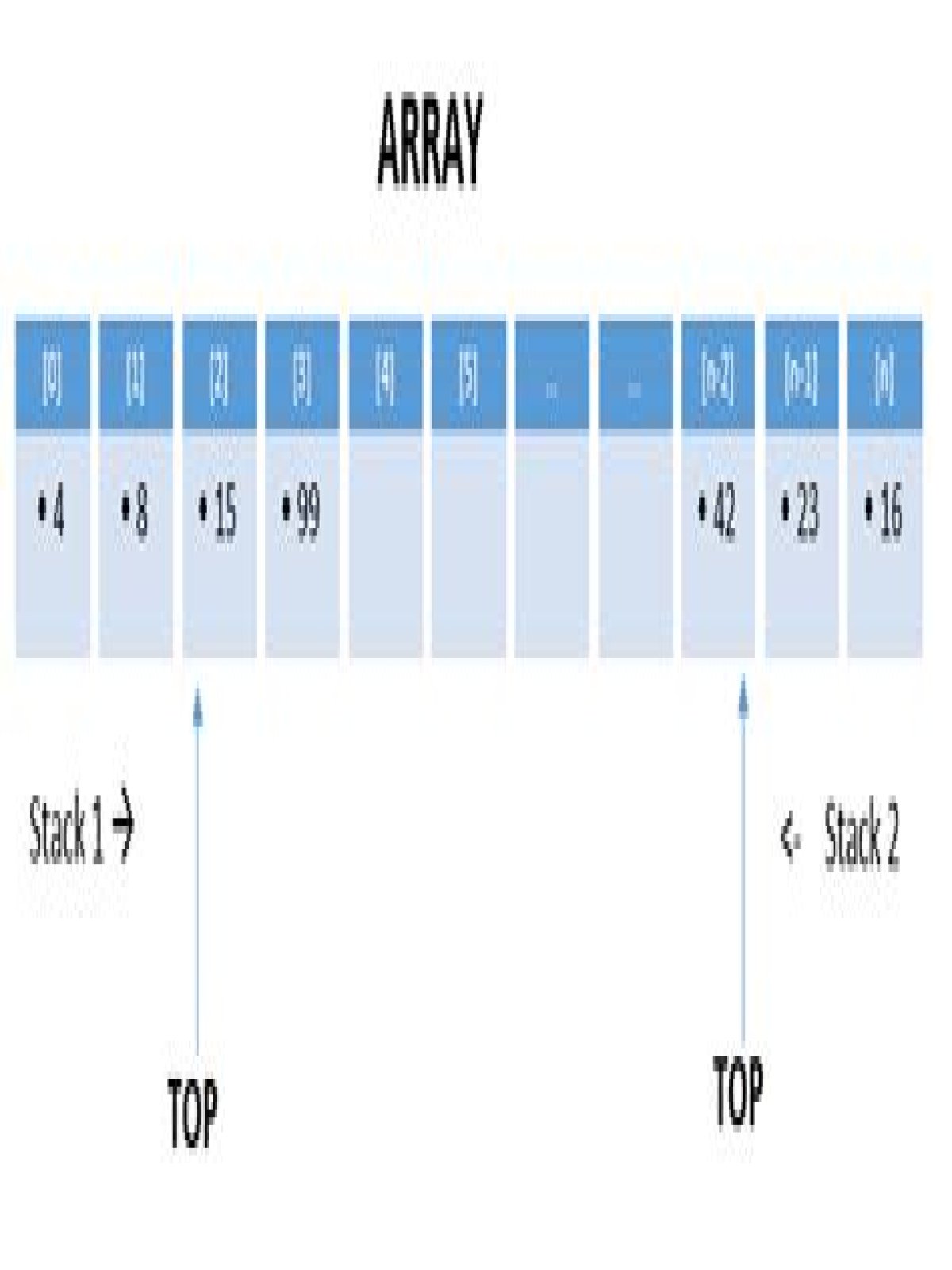Can we implement 2 stacks in a single array?
To implement two stacks in one array, there can be two methods. First is to divide the array in to two equal parts and then give one half two each stack. But this method wastes space. So a better way is to let the two stacks to push elements by comparing tops of each other, and not up to one half of the array.
How many stacks can be implemented using a single array?
Two stacks Two stacks can be efficiently implemented using one fixed sized array: stack #1 starts from the left end and grows to the right, and stack #2 starts from the right end and grows to the left.
What is a two way stack?
What is Double Stack? This type of implementation is known as double stack. In this implementation both stacks grow in opposite directions. One from lower index to higher index and second from higher to lower index. TOP1 initially is -1 and TOP2 initially is MAX.
How do you implement an array stack?
Stack Operations using Array
- Step 1 – Include all the header files which are used in the program and define a constant ‘SIZE’ with specific value.
- Step 2 – Declare all the functions used in stack implementation.
- Step 3 – Create a one dimensional array with fixed size (int stack[SIZE])
Can we implement 3 stacks one array?
As long as you try to arrange all items from one stack together at one “end” of the array, you’re lacking space for the third stack. However, you could “intersperse” the stack elements.
How do you implement 3 stacks in a single array?
Maintain an array of size K, that holds the top of the stack, for each of the stacks. Maintain an allocation array of type Data….You could:
- Define two stacks beginning at the array endpoints and growing in opposite directions.
- Define the third stack as starting in the middle and growing in any direction you want.
Is it possible to implement 2 stack in an array condition none of the stack should indicate an overflow until every slot of an array is used?
Ans: Condition: None of the stack should indicate an overflow until every slot of an array is used. 2 stacks can be implemented for the given condition.
How would you implement two queues in a single array?
A simple way to implement k queues is to divide the array in k slots of size n/k each, and fix the slots for different queues, i.e., use arr[0] to arr[n/k-1] for the first queue, and arr[n/k] to arr[2n/k-1] for queue2 where arr[] is the array to be used to implement two queues and size of array be n.
How do you implement an array?
Obtaining an array is a two-step process. First, you must declare a variable of the desired array type. Second, you must allocate the memory that will hold the array, using new, and assign it to the array variable.
What is implementation of stack?
A stack can be implemented by means of Array, Structure, Pointer, and Linked List. Stack can either be a fixed size one or it may have a sense of dynamic resizing. Here, we are going to implement stack using arrays, which makes it a fixed size stack implementation.
How to implement two stacks in an array?
Program to Implement Two Stacks in an Array 1 We will start two stacks from two extreme end of input array. 2 Left stack will start index 0 and grow towards right end of array. 3 Right array will start from index N-1 and grow towards left end of array. 4 We will use stack number to differentiate between these two arrays.
How to check for overflow in a stack2 array?
The stack2 starts from the rightmost corner, the first element in stack2 is pushed at index (n-1). Both stacks grow (or shrink) in opposite direction. To check for overflow, all we need to check is for space between top elements of both stacks. This check is highlighted in the below code.
What is the difference between array top and array s[]?
Array s [] stores the elements of the stack 3. Array top [] is used to store the top index for each stack 4. Variable ns represents the stack number 5. Variable size represents the size for each stack in an array 6. First we build a function init () to initialize the starting values
How do you grow stacks in an array in C++?
To handle this, we can grow stacks from two extreme corners of the array. In other words, the first stack grows from the 0’th index, and the second stack grows from the (n-1)’th index, where n is the array size. Both stacks can grow towards each other with no fixed capacity.
